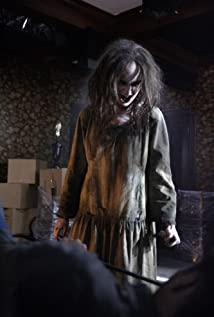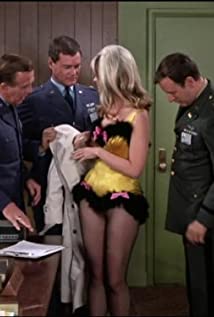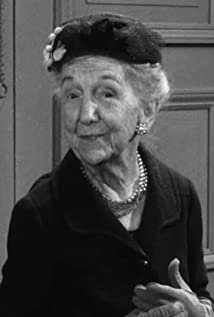As per our current Database, Sylvia Froos has been died on 28 March, 2004 at Manhattan, New York City, New York, USA.
When Sylvia Froos die, Sylvia Froos was 90 years old.
| Popular As | Sylvia Froos |
| Occupation | Actress |
| Age | 90 years old |
| Zodiac Sign | Aries |
| Born | April 19, 1914 (New York City, New York, USA) |
| Birthday | April 19 |
| Town/City | New York City, New York, USA |
| Nationality | USA |
Sylvia Froos’s zodiac sign is Aries. According to astrologers, the presence of Aries always marks the beginning of something energetic and turbulent. They are continuously looking for dynamic, speed and competition, always being the first in everything - from work to social gatherings. Thanks to its ruling planet Mars and the fact it belongs to the element of Fire (just like Leo and Sagittarius), Aries is one of the most active zodiac signs. It is in their nature to take action, sometimes before they think about it well.
Sylvia Froos was born in the Year of the Tiger. Those born under the Chinese Zodiac sign of the Tiger are authoritative, self-possessed, have strong leadership qualities, are charming, ambitious, courageous, warm-hearted, highly seductive, moody, intense, and they’re ready to pounce at any time. Compatible with Horse or Dog.




Throughout the 1920s, vaudeville child star Sylvia Froos was billed as "Baby Sylvia." In 1927 she appeared in two talking films six months before The Jazz Singer (1927) - often referred to as the "first talking picture.
" Froos began her professional career in Baltimore in 1920 at the age of seven, and soon became a successful Vaudeville singer. Before her, there were no other family members in show business. Her devoted mother traveled the vaudeville circuit with Baby Sylvia.
In her teen years, she became known as "The Little Princess of Song," and under that billing made two all-talking short subjects for the Vitaphone Corporation that were released in April 1927 - a half year before the premiere of The Jazz Singer (1927).
Her career blossomed in the 1930s when she had her own radio program on NBC. During that period, Froos began appearing as a featured vocalist on other shows with the likes of Al Jolson, Fred Allen, Paul Whiteman, Johnny Green, Harry Richman, as well as many other big name artists of the time.
In about 1930, she also began making phonograph records for the Crown and Victor record companies. Among the songs she recorded were "Penthouse Serenade," "You Didn't Know the Music" and "Who's Your Little Who-Zis!" In 1933, Froos appeared -- and received higher billing than Shirley Temple -- in "Fox Follies," which was eventually released as Stand Up and Cheer! (1934) Although originally cast as the sister of Madge Evans in the feature film, Froos ultimately appeared as a musical performer singing two numbers - "This is Our Last Night Together" (to heart throb John Boles) and "Broadway's Gone Hill Billy," which she sang while dressed in a cowboy outfit.
According to a story retold by Froos shortly before her death, because of their youth, Froos, Temple and their mothers reportedly went together to the courthouse to secure working papers to appear in the movies.
Froos made several other movie shorts for Vitaphone (released through Warner Brothers), Educational (released through Fox), and Mentone Productions (released through Universal). The shorts for Vitaphone included Rambling 'Round Radio Row #2 (1932), Eddie Duchin & Orchestra (1933), and "Soft Drinks and Sweet Music" (1934) with Georgie Price.
In "Rambling 'Round Radio Row (1932/I)" Froos plays a celebrated singer who is stalked by cameramen. In her boudoir she sings to her real-life mother. Sylvia's older sister, Betty, made an attempt at a career in show business, and played the Keith Circuit.
In order to avoid comparison to her sister, she used the name Betty Fraser. In the mid-1930s, as vaudeville's luster was waning in the United States, Sylvia traveled to England, where the genre was still popular.
There, she played at the Victoria Palace Theater and also appeared on television, long before that medium became familiar to American audiences. In the early 1940s, Froos made about half a dozen "Soundies," an early version of music videos, including "Let's Dream This One Out, "Can't Seem to Laugh Anymore" and "The Wise Old Owl.
" These 3-minute films were produced solely for playing in a Panoram machine, which was a type of video jukebox. Patrons would pay 10 cents and get to hear the song as well as see the performer on a small screen.
Froos enjoyed life on the ocean, and appeared on many grand ships. Her last appearance on phonograph records was about 1950, when she performed under the Jubilee label. One of the songs, "A Satchel and a Seck," a parody of A Bushel & a Peck, was sung with a young Allan Sherman, more than 10 years before he gained national prominence with his own song parody, "Hello Muddah-Hello Faddah.
" Sherman wrote special material, including parodies, for Froos' night club act. In her last years, Froos developed a following among New York musicians and theatrical people; many connected with the Vitaphone Project and the Friends of Old Time Radio Club.
Miss Froos was interviewed in the TV documentary Added Attractions: The Hollywood Shorts Story (2002) written by Leonard Maltin and John Griffin for Turner Classic Movies. When Froos' film shorts began appearing on cable TV, it inspired a new bout of fan mail for her later years.
Her national Fan Club was based in San Francisco. The year before she died, the Princess of Song could still sing. Andrea Marcovicci encouraged Sylvia to join her in song during her show in the Oak Room at the Algonquin Hotel in NY.
Upon hearing Froos' death, singer Michael Feinstein wrote, "Sylvia was a remarkable lady who touched my heart with her kindness and straight forward manner."










